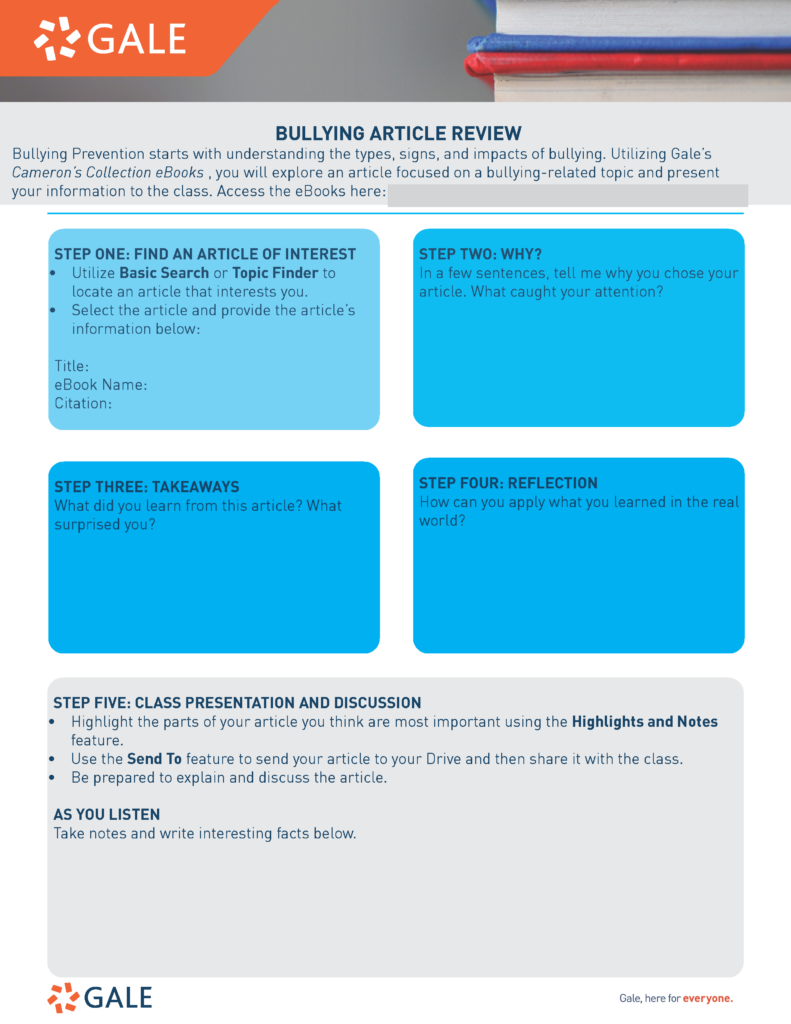| By Gale Staff |
Student mental health concerns increased dramatically throughout the pandemic, and teachers are often some of the first people to notice and respond to these issues. Studies show that among members of Generation Z, more than 40% have a diagnosed mental health concern, yet this same population is less likely to seek help. Data suggests that stigma and the cost of mental health care create significant barriers for young Americans.
May is National Mental Health Awareness Month, so let’s consider ways we can best educate our struggling students and reduce those barriers to seeking help. Middle and high school teachers can offer students support and accurate information by introducing them to Gale’s Cameron’s Collection. For a younger audience, elementary educators might consider Cameron’s Camp for Wellness. These products can be viewed anywhere and at any time, allowing students to access the information they need in a private environment.
Place a Spotlight on Mental Health
National Mental Health Awareness Month began in 1949. An organization called Mental Health America first observed the month-long holiday, motivated to help individuals struggling with mental illness receive quality care and community support. This mission is more important than ever—and this May, educators can help raise awareness for mental health and normalize seeking help. You might consider starting by planning classroom activities to help improve overall student well-being.
Activity Idea: Plan a self-care day for your class! Make some time for students to relax, organize their desks, go for a walk outside, or maybe even practice yoga in the gym. You might invite your colleagues to participate and share ideas as well. Self-care days are especially important to emphasize before stressful events like an upcoming exam or college application deadlines.
Integrate Cameron’s Collection
During National Mental Health Awareness Month, teachers can take the vital step to share accurate, accessible information with their students regarding mental health and treatment. Gale eBooks hosts Cameron’s Collection, a dedicated portal for middle and high school students that hosts titles related to mental health. Teens can browse and download from the collection to access resources on their own private devices.
Among teenage Americans, rates of depression and anxiety are especially high. Cameron’s Collection features poignant content specifically geared toward these issues, as well as stress, suicide, self-harm, gender dysphoria, and bullying. These resources can fill an essential, supportive role for students seeking assistance, whether for their own mental health concerns or to help someone they care about. Education around these common struggles reduces the stigma associated with mental illness and can even help the members of your classroom better support one another.
Activity Idea: Create a list of common mental health concerns that affect young adults—examples include depression, anxiety, stress, suicidal ideation, eating disorders, sleep disorders, attention issues, and social phobias. Using Cameron’s Collection, ask your students to select a topic to explore more fully. Students can create a written overview of what they learned, particularly emphasizing what they may have found surprising.
Explore Cameron’s Camp for Wellness
Encouraging young children to build their emotional vocabulary early will help them better communicate about mental health later on. Cameron’s Camp for Wellness is a collection designed to assist children in recognizing their emotions and developing positive social skills. Topics include building healthy habits, stress management, impulse control, fairness, respect, and social media safety. With Gale’s grade-specific filters, you can guide students toward materials appropriate for their age.
Activity Idea: Carve out some time to practice basic, regulatory breathing with your young classes. Turn off the lights and encourage students to try 4-7-8 breathing, a technique that helps with anxiety. Instruct students to inhale through the nose for four counts, hold their breath for seven counts, and exhale through the mouth for eight counts. Students can use this tool before a stressful test or even to help them fall asleep at night.
Discussing mental health in a safe environment helps students understand they are not alone and encourages conversation on the topic. We’ve curated teacher-specific resources, including webinars and workbooks, to help integrate Cameron’s Collection into your learning spaces.
Looking for an opportunity to introduce your classes to these powerful resources? Reach out to your local Gale rep today!


